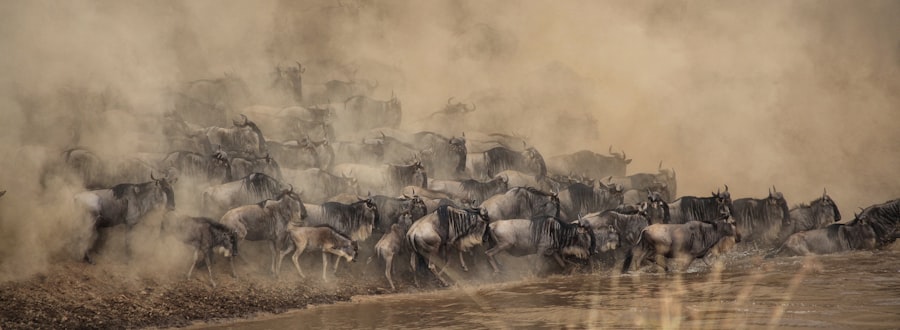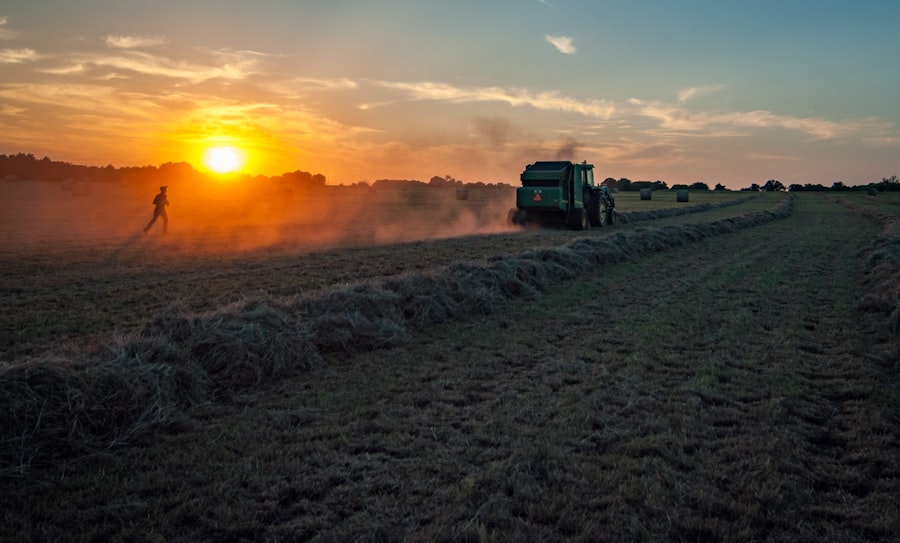Maintaining a comfortable body temperature is crucial for the health and productivity of poultry. Prolonged exposure to high temperatures can cause heat stress in chickens and other birds, leading to decreased egg production, poor growth, and potential mortality. Poultry owners should be aware of heat stress symptoms, including panting, lethargy, and reduced feed intake.
Implementing proactive cooling measures is essential for preventing heat stress and ensuring the well-being of the flock. Heat stress significantly impacts poultry performance. When exposed to high temperatures, birds expend more energy regulating their internal temperature, which can negatively affect growth and egg production.
In severe cases, heat stress may result in death. Recognizing the signs of heat stress and taking appropriate action is vital for poultry owners. By prioritizing temperature management, owners can implement effective strategies to keep their flock comfortable and healthy during hot weather, ultimately safeguarding the birds’ overall well-being and productivity.
Table of Contents
Key Takeaways
- Keeping cool is crucial for the well-being of animals, as overheating can lead to heat stress and even death.
- Shade and shelter provide essential protection from the sun and help animals regulate their body temperature.
- Dust bathing is a natural behavior that helps animals cool off by removing excess oils and parasites from their feathers or fur.
- Spreading wings allows birds to increase air circulation and release excess body heat, aiding in cooling off.
- Seeking out cool water and staying hydrated is vital for animals to regulate their body temperature and avoid heat-related illnesses.
Utilizing shade and shelter
Providing Shade and Shelter
One of the most effective ways to help poultry stay cool in hot weather is by providing ample shade and shelter. Shade can help reduce the direct heat from the sun and provide a cooler environment for birds to rest and seek relief from the heat. Poultry owners can create shaded areas in their coops or runs by using tarps, umbrellas, or natural vegetation such as trees or shrubs.
Regulating Body Temperature
Additionally, providing adequate shelter from the sun and wind can help birds regulate their body temperature and reduce the risk of heat stress. By utilizing shade and shelter, poultry owners can create a more comfortable environment for their birds and help them stay cool during hot weather.
Improving Ventilation
In addition to providing shade and shelter, poultry owners can also take steps to improve ventilation in their coops or runs. Good air circulation is essential for helping birds stay cool in hot weather, as it can help remove excess heat and moisture from the environment. Poultry owners can achieve better ventilation by installing fans, opening windows or vents, and using breathable materials for coop construction.
By utilizing shade and shelter and improving ventilation, poultry owners can create a more comfortable living environment for their birds and reduce the risk of heat stress during hot weather.
Dust bathing for cooling off

Dust bathing is a natural behavior exhibited by poultry that can help them stay cool and maintain good hygiene. When birds engage in dust bathing, they use dry dust or dirt to clean themselves and remove excess oil and parasites from their feathers. This behavior not only helps keep birds clean but also helps them regulate their body temperature.
Dust bathing can provide a cooling effect as the dry dust absorbs moisture from the bird’s feathers and skin, helping them stay cool during hot weather. Poultry owners can encourage dust bathing by providing a designated area with dry soil or sand for their birds to use. By allowing birds to engage in this natural behavior, poultry owners can help them stay cool and comfortable during hot weather.
In addition to providing a designated dust bathing area, poultry owners can also take steps to ensure that the dust is kept dry and free from moisture. Wet or muddy dust bathing areas can be less effective at helping birds stay cool and clean, so it is important to maintain a dry and suitable environment for dust bathing. Poultry owners can also consider adding diatomaceous earth or wood ash to the dust bathing area, as these substances can help control parasites and provide additional benefits for the birds’ health.
By encouraging dust bathing and maintaining a suitable environment for this behavior, poultry owners can help their birds stay cool and comfortable during hot weather.
Spreading wings for ventilation
Another natural behavior that poultry exhibit to help them stay cool is spreading their wings. When birds spread their wings, they increase the surface area of their bodies, which can help them dissipate excess heat and regulate their body temperature. This behavior is particularly common in hot weather when birds are trying to cool off and find relief from the heat.
Poultry owners can observe their birds spreading their wings as a sign that they are trying to stay cool and take steps to provide a more comfortable environment for them. By understanding the significance of wing spreading for ventilation, poultry owners can recognize the signs of heat stress in their birds and take proactive measures to help them stay cool during hot weather. In addition to recognizing the significance of wing spreading for ventilation, poultry owners can also take steps to provide a suitable environment that encourages this behavior.
Providing ample space in the coop or run can allow birds to spread their wings more freely and find relief from the heat. Poultry owners can also ensure that their birds have access to clean and dry bedding, as this can provide a comfortable surface for them to rest and spread their wings. By understanding the importance of wing spreading for ventilation and providing a suitable environment for this behavior, poultry owners can help their birds stay cool and comfortable during hot weather.
Seeking out cool water and hydration
Access to cool water is essential for helping poultry stay cool and hydrated during hot weather. Birds rely on water to regulate their body temperature and maintain overall health, so it is crucial for poultry owners to provide a constant supply of clean and cool water for their flock. Poultry owners can take steps to ensure that water containers are kept in shaded areas to prevent overheating and provide a refreshing source of hydration for their birds.
Additionally, adding ice or frozen water bottles to water containers can help keep the water cool and provide relief from the heat. By understanding the importance of seeking out cool water and hydration, poultry owners can prioritize the well-being of their flock and help them stay comfortable during hot weather. In addition to providing access to cool water, poultry owners can also take steps to encourage their birds to stay hydrated during hot weather.
Offering water-rich foods such as fruits or vegetables can help supplement the birds’ water intake and provide additional hydration. Poultry owners can also consider adding electrolytes or vitamins to the birds’ water supply to support their overall health during periods of heat stress. By understanding the importance of seeking out cool water and hydration, poultry owners can take proactive measures to ensure that their flock stays well-hydrated and comfortable during hot weather.
Adjusting behavior during hot weather

Changes in Behavior
Poultry may adjust their behavior in various ways to stay cool and comfortable. For instance, they may spend more time resting in shaded areas or reduce their activity levels during the hottest parts of the day. By observing these changes, poultry owners can identify signs that their birds are trying to cope with the heat and take necessary steps to provide additional shade or shelter options.
Feeding Patterns
In addition to behavioral changes, poultry may also alter their feeding patterns during hot weather. They may reduce their feed intake or consume more water-rich foods to stay hydrated. Poultry owners can observe these changes in feeding behavior as a sign that their birds are trying to cope with the heat and take proactive measures to ensure access to a balanced diet that supports their overall health during periods of heat stress.
Proactive Measures
By understanding how poultry adjust their behavior and feeding patterns during hot weather, poultry owners can take proactive measures to help their flock stay cool, comfortable, and well-nourished. This includes providing additional shade or shelter options, ensuring access to a balanced diet, and monitoring their birds’ behavior and feeding patterns to identify any signs of heat stress.
Breeding for heat tolerance
Breeding for heat tolerance is an important consideration for poultry owners who want to raise birds that are better adapted to hot weather conditions. Selecting breeds that are known for their heat tolerance traits, such as lighter feather colors or larger combs that aid in heat dissipation, can help improve the overall resilience of the flock during periods of heat stress. Poultry owners can also consider crossbreeding different breeds to create hybrids that exhibit improved heat tolerance traits.
By understanding the significance of breeding for heat tolerance, poultry owners can prioritize the well-being of their flock and work towards raising birds that are better adapted to hot weather conditions. In addition to breeding for heat tolerance traits, poultry owners can also take steps to acclimate their birds to hot weather conditions through gradual exposure and management practices. Gradually exposing young birds to increasing temperatures can help them develop better heat tolerance over time.
Additionally, providing ample shade, shelter, and access to cool water can help mitigate the effects of heat stress on the flock. By understanding the significance of breeding for heat tolerance and implementing management practices that support acclimation to hot weather conditions, poultry owners can work towards raising a more resilient flock that is better adapted to cope with periods of heat stress. In conclusion, understanding the importance of keeping cool is crucial for the well-being of poultry during hot weather conditions.
By utilizing shade and shelter, encouraging dust bathing and wing spreading for ventilation, providing access to cool water and hydration, adjusting behavior during hot weather, and breeding for heat tolerance, poultry owners can take proactive measures to ensure that their flock stays comfortable and healthy even in extreme temperatures. Prioritizing the well-being of poultry during hot weather conditions is essential for maintaining productivity and overall performance while reducing the risk of heat stress-related issues. By understanding the significance of keeping cool and implementing strategies to support this goal, poultry owners can create a more comfortable living environment for their birds and ensure their overall well-being during periods of extreme heat.
If you’re interested in learning more about how to keep chickens cool, you might want to check out this article on chicken coop nest boxes. It provides valuable information on creating a comfortable and safe environment for your chickens to beat the heat.
FAQs
What are some natural ways that chickens keep cool?
Chickens keep cool by finding shade, dust bathing, and spreading their wings to increase air flow. They also pant to release heat and regulate their body temperature.
Do chickens need access to water to stay cool?
Yes, chickens need access to fresh, clean water to stay cool. They will drink more water in hot weather to help regulate their body temperature.
How important is ventilation in a chicken coop for keeping chickens cool?
Ventilation is crucial in a chicken coop to keep chickens cool. Proper airflow helps to reduce heat and humidity, creating a more comfortable environment for the chickens.
What are some signs that chickens may be overheating?
Signs that chickens may be overheating include panting, holding their wings away from their bodies, and reduced activity. It’s important to take action to cool them down if these signs are observed.
Can providing frozen treats help chickens stay cool?
Yes, providing frozen treats such as fruits or vegetables can help chickens stay cool. The cold treats can provide relief from the heat and also serve as a source of hydration.
Meet Walter, the feathered-friend fanatic of Florida! Nestled in the sunshine state, Walter struts through life with his feathered companions, clucking his way to happiness. With a coop that’s fancier than a five-star hotel, he’s the Don Juan of the chicken world. When he’s not teaching his hens to do the cha-cha, you’ll find him in a heated debate with his prized rooster, Sir Clucks-a-Lot. Walter’s poultry passion is no yolk; he’s the sunny-side-up guy you never knew you needed in your flock of friends!







